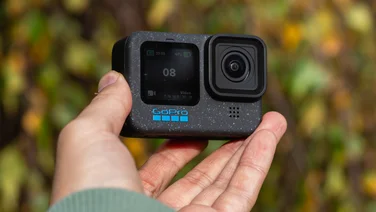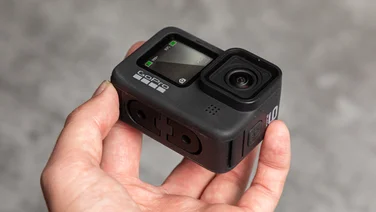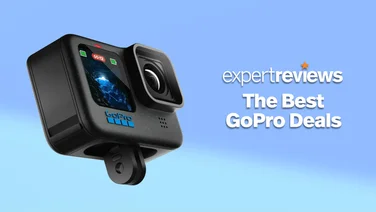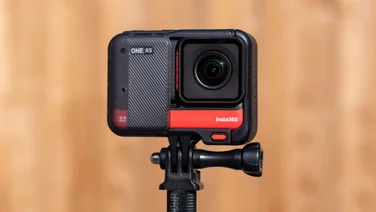To help us provide you with free impartial advice, we may earn a commission if you buy through links on our site. Learn more
























- Great video and stills quality
- Easy to setup, simple to fly
- Excellent battery life
- No object avoidance
- App lacks proactive no-fly zone warnings
The Parrot Anafi represents a bit of a watershed moment for the French drone firm. Although it’s been making drones for a long while, the Anafi is its very first folding quadcopter. More important, perhaps, is that this is the first time it can say it has a product to rival the best DJI has to offer. Good though its previous offerings have been, they haven’t quite managed to combine the ease of flight, full range of features and camera quality of DJI’s range.
READ NEXT: DJI Mavic Air review – the best drone money can buy
Parrot Anafi review: What you need to know
That all changes with the Parrot Anafi, which goes toe to toe with DJI’s own folding drones, the Mavic Air and Mavic Pro. Just like those drones, the Anafi’s arms fold away so it can be stowed snugly in a case and slung in a small bag or backpack, and just like those drones, it shoots 4K video and top-quality stills.
The Anafi comes with a remote control but it can also be flown solely from the screen of a connected smartphone. And although there are no gesture-based selfie controls like you get with DJI’s portably quadcopters it does come with a number of automated camera and tracking modes to help you get the best possible shot.
























Parrot Anafi review: Price and competition
At a price of £630, the Parrot Anafi has the Mavic Air firmly in its sights. That’s a very competitive price for a drone of its type and it significantly undercuts the Air’s launch price of £769. Currently, the Air can be had for £699 on Amazon, but that’s still £70 more expensive than the Anafi.
In terms of alternatives, the diddy DJI Spark and the DJI Mavic Pro also hove into view. The former doesn’t fold away like the Anafi, nor can it capture 4K video, but it’s tiny, easily baggable once stowed in its case and flies beautifully. Moreover, you can buy a Spark for £450, although at that price you don’t get a dedicated remote control included; you’ll need to pay extra for that. Going up the scale, we have the Mavic Pro, which is more expensive than the Anafi (£756), but is quicker and has a more comprehensive feature set.
Parrot Anafit review: Design and features
The Parrot Anafi sits between the DJI Mavic Air and the Pro in terms of its size. It could have been smaller if Parrot had engineered the front rotor arms to fold backwards and its rear arms to fold forwards; instead, they fold in the opposite direction and the whole thing ends up being long and thin instead of short and squat. For reference, it’s about half the size of a French baguette, which is strangely appropriate given the Anafi’s continental origins.
Still, once snugly fitted in the included case it’s pretty easy to stow in a bag and its low weight of 320g means you’ll hardly know it’s there. The flip side is that the Anafi feels quite flimsy compared to the beefier Mavic Air, but build quality is decent and because it’s lighter, it’s less likely to do damage or cause injury if you manage to crash it into something or someone. The one concern I’d have over the build is the microSD card slot. Located beneath the battery, this employs one of those flimsy hinging metal latches to lock it in place, which I’d imagine would be easy to break or damage if you forget to close it, then pop the battery back in on top of it.
























The Anafi also has a few features that the DJI drones do not have. First up, both the remote control and battery can be recharged using a regular USB Type-C charger, where the Mavic Air’s batteries employ a proprietary connector. That means you don’t have to remember to take the charger with you wherever you go; you can top up the batteries from any convenient USB socket or adapter.
Second, its camera and gimbal are mounted in such a way that allows you to shoot video directly up as well as forwards and down, a unique feature as far as I can tell. The Mavic Air’s camera can only shoot upwards at an angle of 17 degrees and downwards at 90 degrees). Usability, too, is superior. I do like the DJI Go 4 app, but Parrot’s Free Flight app is simpler, much quicker to set up and more intuitive in operation than DJI’s, though it does lack some features. The Parrot Anafi is a better drone for newcomers as a result and, coupled with its lighter weight, a lot less intimidating to fly.
There are a few key areas where the Anafi lags behind the Mavic Air, however. The remote controller, although it is well made and comfortable to use, is heavier and bulkier than the Mavic Air’s. Second – and this is the big miss – is that the Anafi has no object avoidance cameras. If you misjudge a fly-by, that’s it: there’s no safety net. This drone will crash and burn.
The Mavic Air, conversely, has twin sensors on the front and rear of the drone, which when enabled help the drone map its surroundings and prevent it in most circumstances from flying forward or backwards into trees, bushes people or buildings. Obstacle avoidance is especially useful when using the automated camera shots; without it, I’d be nervous of allowing the drone go off and do its own thing.
























Parrot Anafi review: Camera
Assuming you can avoid disaster, though, you’ll come away from your flights with some top-quality footage and photos. And, on paper at least, the Anafi is the winner on this front.
It can shoot 4K at the same resolution, frame rate and bit rate (up to 100Mbits/sec) as the impressive Mavic Air, adding the ability to shoot cinema-style 24fps on top of the 25fps and 30fps modes the Mavic Air can shoot in. It can capture HDR video, too, which the Air can’t, and snap 21-megapixel photos, where the DJI is restricted to 12 megapixels.
You don’t get quite the same level of manual control here that you do with the Mavic Air, or the sheer breadth of different modes, but there are other things that the Anafi does better. The digital lossless video zoom of 1.4x at 4K and 2.8x at 1080p is seriously useful and another feature the Mavic Air can’t replicate.
























Quality-wise, there’s not an awful lot between the two drones. The Anafi’s HDR mode is its most interesting feature, but it doesn’t work particularly well. While the camera picks up a rich palette of colours when you turn it on, in my view footage looks oversaturated, plus you get a lot of speckly noise in parts of the image.
Disable HDR, however, and the footage looks spectacular. It’s crisp and clear, dealing equally well with bright sunshine, twilight and sunsets. To my eye, the footage produced by the Anafi is slightly superior to that shot on the Mavic Air, although there isn’t an awful lot between the two.
















































Stability in flight is good, too, despite the fact that the Anafi has mechanical stabilisation only for pitch and yaw. Panning stabilisation is purely digital. Even in a moderate breeze and with the Anafi visibly jigging around in the air in an attempt to stay in one place, footage from the camera remained smooth and steady.
And there’s a host of different camera modes to choose from. In Pro mode, you can set shutter speed, ISO, white balance and exposure compensation manually, for both stills and video. You can have the drone track your position while stationary or that of a particular element of your scene as you fly around, and there’s a number of interesting automated camera shots, too.
























The terribly named “SmartDronies” tools include a dolly zoom option, where the Anafi flies backwards and away from you while zooming in (or towards you while zooming out) to create a change in perspective while the subject remains the same size. It’s an effect that was used to great effect by cinematographer, Irmin Roberts in the Hitchcock movie, Vertigo, and it’s great fun to experiment with here.
Sadly, the tracking option, where the drone will follow you around, is an in-app purchase that costs extra cash to unlock. That’s disappointing when the competition includes so much more as standard.
Parrot Anafi review: Flight
The trouble with these automated modes is that, since the Anafi has no object-avoidance sensors, you have to be very careful that there’s plenty of space clear in the surrounding area. The Mavic Air, conversely, has object-avoidance sensors at both the front and rear of the drone.
That’s a shame, because otherwise the Parrot Anafi is a responsive and enjoyable drone to fly. It has two modes: a smoother, slower “Film” mode and a faster “Sport” mode, in which the drone reaches speeds up to 34mph. That’s not as quick as the Mavic Air’s 43mph top speed, and the Anafi doesn’t feel quite as responsive either, taking around five metres to come to a stop when you let go of the sticks at top speed. It’s nippy enough for most purposes, though.
























The Anafi holds position solidly, whether it’s being flown indoors or out, thanks to downwards-facing sonar and camera, and it flies predictably even in moderate wind. I tested it out on a pretty breezy day and it coped just fine. Surprisingly, Parrot says it’ll deal with winds up to 50km/h where the Air is only rated at up to 38km/h, although in my experience the Mavic tends to skips around less in the breeze than the Anafi does. The Anafi is quieter, though, and its smaller, lighter rotor blades make it easier to manoeuvre in tight spaces.
As for range, that’s a decent 4km. However, as with most small drones, you’ll lose sight of the Anafi long before it goes that far, and that’s illegal in the UK. Perhaps what’s the most impressive about the Anafi, though, is its flight time. Parrot rates it at up to 25 minutes and I got pretty close to that (19 minutes) in breezy conditions while shooting around six minutes of 4K video and spending around half the time in Sport mode.
It’s also good to see a selection of safety features in the app, including geofencing and maximum altitude restrictions: essential for anyone taking their first steps in piloting. It lacks the no-fly-zone warnings of the DJI app, which tell you if you’re about to take off in an area close to an airport or a built-up area, so you’ll need to check on a third-party app to make sure you’re not flying in a potentially unsafe place.
Parrot Anafi review: Verdict
In summary, the Parrot Anafi is a very fine compact camera drone that competes gamely with the Mavic Air. And that’s nothing short of remarkable given how amazingly good the Mavic Air is.
The Parrot is even superior in a few areas – it’s quieter, flies for longer and is easier to charge and use. Its 4K video is slightly better, too, and it shoots higher-resolution photographs as well.
In the end, though, the Parrot falls short in a couple of important areas. Its HDR mode doesn’t work all that well, and it lacks the object avoidance and outright performance in flight of the Mavic Air. The Mavic Air remains the best drone money can buy. Just.







